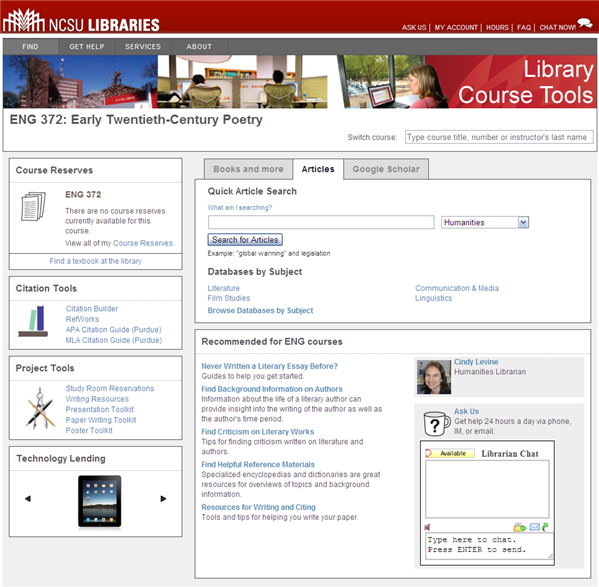I have mentioned Libguides a couple of times, which seem to be quite widely used. I have been interested recently to come across some other initiatives which aim to organize subject- or course-based library resources within a consistent content management environment which reduces custom effort.
- I enjoyed listening to Allie Flanary present about students and search strategies at the Orbis Cascade Alliance Worldcat Discovery Day. Allie works at the Portland Community College, where the event was held. The course guides she was using caught my eye and I went back later to see how they were put together. Here is the one for Fashion design, for example. I discovered that they use Library à la Carte, developed at Oregon State University:
The Library à la Carte Content Management System (CMS) enables librarians to easily and quickly create dynamic web pages that integrate Web 2.0 features, such as chat and RSS feeds, with traditional library content, such as catalogs and article databases. Library à la Carte is a free open-source solution for libraries by libraries.
- A redesign of the NCSU Library website highlights course-related services. Among these are course pages (see one below) which include some general resources, some course-specific resources, and a link to a librarian. I was interested to discover that these were based on a home-grown framework, Course Views, which is described in an article in the Code4Lib Journal:
The NCSU Libraries’ Course Views project, along with a locally developed widget web service, improves course-based access to library collections and services by dynamically generating library course pages for all 6000+ courses at NCSU. By automatically generating custom content when possible and showcasing authored content when available, Course Views is able to achieve full course coverage without significantly increasing staff time to create and manage content. This paper will describe the system and the use of web services to achieve scalable and sustainable delivery of course-related library content.
- I have noted in these pages that I think that The University of Michigan Libraries website does a nice job of projecting the library as a unified service rather than as a group of disjoint opportunities. In the search and browse sections they return a variety of resources organized by type as well as links to relevant librarians (as I said then, they try, literally, to put a ‘human face’ on search results). Here is the browse page for Biological chemistry for example. Now, there appears to be quite a lot going on under the surface here, and Ken Varnum provides a high level view of design decisions. Interestingly, these pages include Research Guides as one category, which are based on Libguides; here is the guide for Biological Chemistry for example.




